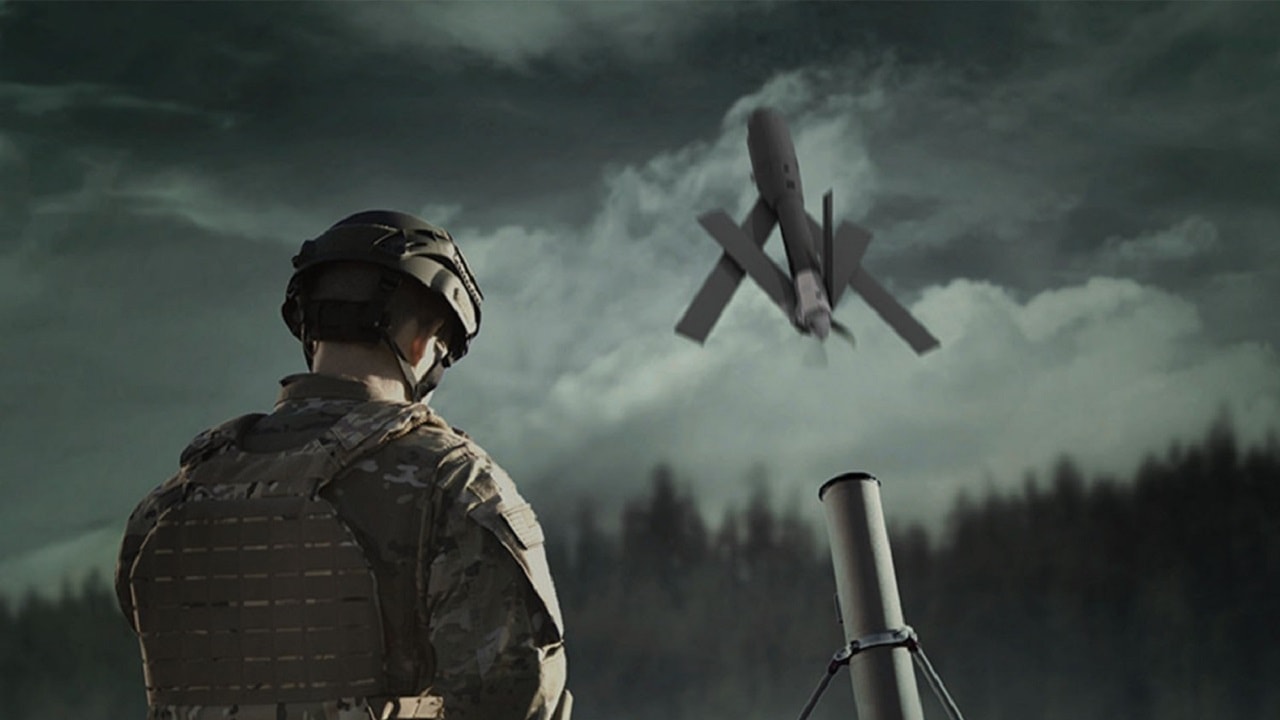Attack of the Drones – Social Media Shares Fight Between UAVs in Ukraine – A video posted to social media on Sunday captured the moment a commercially-made Ukrainian drone slammed into a Russian Autel EVO II unmanned aerial vehicle (UAV) over the Donetsk Oblast in the Donbas region of Eastern Ukraine. The Russian drone appeared to be knocked out of the sky.
At the end of the 11-second-long clip, the Russian UAV can be seen crashing to the ground.
Aerial Drone War
No ordnance or other weapons were employed, and instead, the undisclosed Ukrainian drone seemed to have struck the Russian UAV with force – and the impact was enough to cause it to crash.
“Donetsk Oblast, a Ukrainian quadcopter engages in a jousting match with a Russian Autel EVO II, downing it,” OSINTtechnical (@Osinttechnical), the open-source military intelligence analyst website, wrote in a post to Twitter.
The video has not been independently verified. However, it has been well-established that both Kyiv and Moscow continue to deploy drones for surveillance and observation over Ukraine. At the same time, each also has utilized small UAVs to deliver ordnance to target, whilst loitering munitions are also being utilized by both sides.
Drones and other remotely-operated UAVs can be highly maneuverable, yet even a minor impact can be enough to cause them to crash.
It was just three weeks ago that a Russian Sukhoi Su-27 (NATO reporting name “Flanker”) jet fighter struck a United States Air Force MQ-9 “Reaper” unmanned aerial system (UAS) over the Black Sea. The fighter had previously released a spray of jet fuel over the drone before its wing struck the Reaper’s propeller. U.S. operators were then forced to bring down the drone into the sea after remotely wiping its hard drive of sensitive information.
Lessons From History
The conflict in Ukraine has already been described as the first “drone war” as both sides have been using small aerial vehicles in significant numbers, but this may be the first direct “drone-to-drone” action in the ongoing conflict.
It is also notable that the now more than 13-month-long war has evoked comparisons to the First World War for the use of trench lines and artillery duels, but that conflict is also remembered for the widespread use of aircraft that resulted in aerial “dogfights.”
Though American mercenaries Dean Ivan Lamb and Phil Rader had actually been the first to engage in aerial combat in 1913 – with each flying a small (primitive) aircraft, reported to be Curtiss Model D Pusher and Christofferson Pusher respectively, during the Mexican Revolution and unsuccessfully exchanging pistol fire – the First World War saw quick development of “fighter planes.” Though the first pilots often just waved at each other, the aviators soon carried pistols, and within a few months machine guns were then mounted over the wings.
It is believed that the first successful effort to “shoot down” an enemy plane took place over Reims, France in October 1914.
Yet, two months earlier, Staff-Captain Pyotry Nesterov of the Russian Army successfully rammed his plane into an enemy spotter aircraft – a tactic not that different from the Russian Su-27’s pilots to down the Reaper. Perhaps the current Su-27 pilot knows the name Nesterov, as he was also credited with being the father of aerial aerobatics. Nesterov’s ramming tactics were employed by Russian pilots throughout the First World War, while many Soviet pilots further utilized the tactic in World War II.
Donetsk Oblast, a Ukrainian quadcopter engages in a jousting match with a Russian Autel EVO II, downing it. pic.twitter.com/4W7k23jcql
— OSINTtechnical (@Osinttechnical) April 2, 2023
However, it is worth noting that Neserov was likely too eager to destroy enemy aircraft and died following a crash in September 1914 – just weeks after he devised his unorthodox tactics.
We should almost expect to see drone-to-drone dogfights increase. It may begin with ramming tactics, but armed drones that are able to shoot at each other could be the next logical evolutionary step.
Author Experience and Expertise:
A Senior Editor for 19FortyFive, Peter Suciu is a Michigan-based writer. He has contributed to more than four dozen magazines, newspapers, and websites with over 3,200 published pieces over a twenty-year career in journalism. He regularly writes about military hardware, firearms history, cybersecurity, politics, and international affairs. Peter is also a Contributing Writer for Forbes and Clearance Jobs. You can follow him on Twitter: @PeterSuciu.

